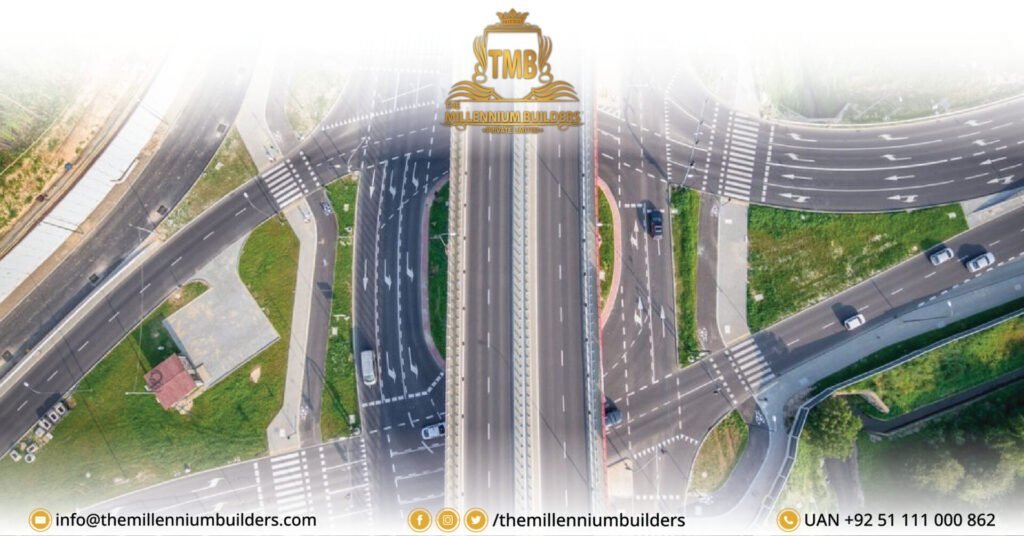CPEC (China-Pakistan Economic Corridor) is a large-scale infrastructure development project between China and Pakistan that aims to enhance connectivity and promote economic cooperation between the two countries. It is part of China’s Belt and Road Initiative (BRI) and was launched in 2013.
The project includes the construction of highways, railways, pipelines, and other infrastructure projects, such as the Gwadar Port in Pakistan’s southwestern Balochistan province. The total value of the CPEC project is estimated to be around $62 billion, with the majority of the funds coming from China.
The CPEC project is expected to provide numerous benefits to both China and Pakistan. For China, it provides access to new markets and resources, as well as a faster and more secure trade route to the Middle East, Africa, and Europe. For Pakistan, it is expected to generate economic growth and create job opportunities, especially in underdeveloped regions of the country. In this article, we examine Impact of CPEC on Pakistan’s Economy, weighing its benefits, challenges, and controversies.

The China-Pakistan Economic Corridor (CPEC) is a multi-billion-dollar infrastructure and development project that aims to connect Pakistan’s Gwadar Port with China’s northwestern region of Xinjiang via a network of highways, railways, and pipelines. CPEC has been touted as a game-changer for Pakistan’s economy, with the potential to boost economic growth and create thousands of jobs.
Here are some of the key impacts of CPEC on Pakistan’s economy:
CPEC is expected to have a significant impact on Pakistan’s economy. It is estimated that the project will bring in around $62 billion in investment from China, which will be used to build infrastructure, including power plants, roads, railways, and a deep-water port at Gwadar. This investment is expected to create employment opportunities and boost economic growth in Pakistan. The project is also expected to facilitate trade between China and Pakistan, as well as between other countries in the region, which could further strengthen Pakistan’s economy.

CPEC has significant political implications for Pakistan as well. The project is expected to increase China’s strategic presence in the region, which could help Pakistan counterbalance India’s growing influence. CPEC is also expected to improve Pakistan’s relations with China, which is already one of its closest allies. Moreover, the project is expected to improve Pakistan’s security situation by providing much-needed infrastructure in remote areas of the country, which have been plagued by insurgency and terrorism.

The China-Pakistan Economic Corridor (CPEC) is a significant infrastructure development project that aims to connect Gwadar Port in southwestern Pakistan with China’s northwestern region of Xinjiang via a network of highways, railways, and pipelines. The project, which is part of China’s larger Belt and Road Initiative (BRI), is expected to spur economic growth and development in Pakistan and strengthen regional connectivity.
CPEC has already brought significant infrastructure development to Pakistan. Some of the major projects include:
Conclusion: CPEC is very important for Pakistan and will benefit the country in many ways.

The China-Pakistan Economic Corridor (CPEC) is a multi-billion-dollar infrastructure and development project that aims to connect the Chinese city of Kashgar with Pakistan’s deep-water port of Gwadar. The project includes the construction of highways, railways, pipelines, and energy infrastructure across Pakistan, with the aim of boosting economic growth and connectivity in the region. There are several ways in which CPEC is expected to benefit Pakistan.
Firstly, the project is expected to significantly boost Pakistan’s infrastructure, which has long been seen as a bottleneck to economic growth. The construction of new highways, railways, and ports will improve the country’s connectivity and make it easier for goods and people to move around the country. This, in turn, is expected to increase trade and investment, create jobs, and stimulate economic growth.
Secondly, the energy infrastructure being built under CPEC is expected to address Pakistan’s chronic energy shortage. The country has long struggled with power outages and load shedding, which have had a negative impact on the economy. The construction of new power plants, including those using renewable energy sources such as solar and wind, is expected to provide Pakistan with a more reliable and sustainable source of energy.
Thirdly, CPEC is expected to increase Pakistan’s strategic importance in the region. The deep-water port of Gwadar, which is being developed as part of the project, is located near the Strait of Hormuz, through which much of the world’s oil passes. This makes Gwadar an important location for both China and Pakistan, as it provides them with a strategic foothold in the region.
The CPEC is expected to create millions of jobs in Pakistan, both directly and indirectly. This would help reduce poverty, increase the standard of living, and boost domestic consumption.
The CPEC is expected to attract foreign investment in Pakistan’s infrastructure, manufacturing, and service sectors, creating opportunities for local businesses to grow and expand.
The CPEC will enhance regional connectivity, providing Pakistan with access to Central Asian, Middle Eastern, and African markets. This would help diversify Pakistan’s trade partners and reduce its dependence on traditional partners.
Moreover, CPEC is expected to increase China-Pakistan economic cooperation and strengthen the relationship between the two countries. China is already one of Pakistan’s largest trading partners, and CPEC is expected to further deepen this economic relationship. China is going to be a super power of the world, so the project will benefit Pakistan in every way. This, in turn, is expected to increase Pakistan’s integration into the global economy and help it attract more foreign investment.
However, the success of the project will depend on a number of factors, including effective implementation, addressing security concerns, and ensuring that the benefits are shared fairly across the country.
CPEC stands for China-Pakistan Economic Corridor, which is a multi-billion-dollar development project aimed at improving transportation infrastructure, energy supply, and trade links between China and Pakistan. It is important for Pakistan as it is expected to boost Pakistan’s economic growth, create jobs, attract investment, and enhance regional connectivity.
The benefits of the CPEC for Pakistan’s economy include boosting energy supply, improving infrastructure, creating jobs, attracting investment, and enhancing regional connectivity.
The challenges of the CPEC for Pakistan’s economy include the debt trap, economic dependence on China, environmental costs, security concerns, and local displacement.
The controversies surrounding the CPEC in Pakistan include lack of transparency, political implications, unequal distribution of benefits, geopolitical risks, and cultural and social impacts.
The China-Pakistan Economic Corridor (CPEC) is a game-changer for Pakistan’s economy, but it also poses significant challenges and controversies. While the project has the potential to boost Pakistan’s economic growth, create jobs, attract investment, and enhance regional connectivity, it could also trap Pakistan in a debt crisis, deepen its economic dependence on China, damage the environment, raise security concerns, and lead to the unequal distribution of benefits. Therefore, Pakistan needs to address these challenges and controversies proactively and ensure that the benefits of the CPEC are shared equitably among different regions and communities.

Manahil Tariq, A content writer and copywriter with over 2 years of experience Throughout my career, I have worked with a diverse group of clients from around the world. I also work with real estate firms and marketing agencies. Writing is where my skills and expertise really shine.
Suite #06, 2nd Floor, Block D, Spring North Commercial Bahria Town Phase 7, Islamabad
First Floor, Sea View Hotel, Javed complex, Airport road, Gawadar.
Suite# 1 , 24069 Ryan Rd, Warren, 48091, Michigan USA.
Laffinge straat 8400,oostende-Belgium.
1023 Parsons Road SW Edmonton AB T6X0X2. +1 (780) 709-4405 (only Whatsapp)
2024 © Copyright The Millennium Builders (PVT) Ltd.